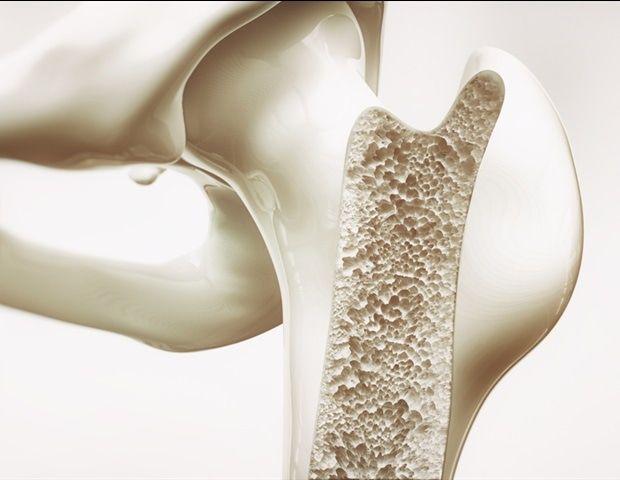Spatial Transcriptomics: Revolutionizing Musculoskeletal Research with AI Integration
2 Sources
2 Sources
[1]
Spatial transcriptomics could transform musculoskeletal research
Chinese Academy of SciencesJun 9 2025 Conventional transcriptomic techniques have revealed much about gene expression at the population and single-cell level -- but they overlook one crucial factor: spatial context. In musculoskeletal tissues, where function depends heavily on structure and cellular organization, the loss of spatial information can mean missed opportunities for discovery. Technologies like bulk RNA sequencing and single-cell RNA sequencing fail to capture how neighboring cells interact or how gene activity varies across tissue architecture. These limitations have long hindered efforts to fully understand development, injury, and disease in the musculoskeletal system. Due to these challenges, a deeper exploration using spatially-resolved techniques has become increasingly essential. In a comprehensive review (DOI: 10.1038/s41413-025-00429-w) published in Bone Research in May 2025, researchers from Hebei Medical University, Xiamen University, and Huazhong University of Science and Technology present an in-depth analysis of spatial transcriptomics and its emerging applications in musculoskeletal research. The team catalogs recent breakthroughs in Spatial Transcriptomics (ST) technologies and outlines how they are being deployed to chart developmental pathways and investigate diseases like arthritis and muscle degeneration. By offering a practical framework for integrating ST tools into research workflows, the authors aim to guide scientists navigating this fast-evolving field. The review dissects the two main classes of Spatial Transcriptomics (ST) technologies -- imaging-based and sequencing-based -- comparing their capabilities, trade-offs, and compatibility with various tissue types. Imaging techniques like RNAscope and multiplexed error-robust fluorescence in situ hybridization (MERFISH) deliver pinpoint accuracy for a select set of genes, while sequencing-based methods such as Visium and Stereo-seq provide broad, transcriptome-wide views across larger tissue areas. Researchers have already leveraged these tools to unravel the molecular choreography of human limb development, trace skeletal stem cell niches, and reveal spatial gene patterns in disorders like rheumatoid arthritis and tendon injuries. In one highlighted case, spatial transcriptomics mapped the intervertebral disc's cellular architecture, identifying progenitor cells responsible for tissue regeneration. In another, it illuminated how scar-forming macrophages and stem cells interact to block muscle repair after trauma. The review also presents a step-by-step guide for selecting appropriate ST platforms based on factors like resolution, cost, species specificity, and research aims -- making it a critical resource for scientists entering this space. Spatial transcriptomics has added an essential dimension to our understanding of musculoskeletal biology. It enables us to pinpoint where genes are active within the intact tissue environment, linking gene function to spatial organization. This level of insight is opening new doors in disease research and therapy development. As we refine the tools and broaden their accessibility, we expect ST to become a foundational technique across orthopedic and regenerative medicine." Prof. Wei Chen, co-corresponding author and orthopedic surgeon at Hebei Medical University The ability to map gene expression in space is transforming how we understand and treat musculoskeletal conditions. In developmental biology, spatial transcriptomics helps chart normal growth and detect congenital anomalies. In clinical research, it's revealing the spatial complexity of diseases like osteoarthritis, enabling more precise classification and treatment strategies. Looking ahead, advancements in 3D spatial mapping, spatial multi-omics, and artificial intelligence will further amplify the power of ST. These innovations could lead to personalized therapies, improved biomaterials for tissue repair, and smarter drug targeting -- positioning spatial transcriptomics at the heart of the future of musculoskeletal medicine. Chinese Academy of Sciences Journal reference: Wang, H., et al. (2025). Advances in spatial transcriptomics and its application in the musculoskeletal system. Bone Research. doi.org/10.1038/s41413-025-00429-w.
[2]
Cracking the Spatial Code: A New Chapter in Bone and Muscle Research | Newswise
Challenges and Prospects. Challenges and prospects faced by spatial transcriptomics itself and its application to the musculoskeletal system. AI Artificial intelligence, FFPE Formalin fixed and paraffin embedded, FF Fresh frozen. Newswise -- Conventional transcriptomic techniques have revealed much about gene expression at the population and single-cell level -- but they overlook one crucial factor: spatial context. In musculoskeletal tissues, where function depends heavily on structure and cellular organization, the loss of spatial information can mean missed opportunities for discovery. Technologies like bulk RNA sequencing and single-cell RNA sequencing fail to capture how neighboring cells interact or how gene activity varies across tissue architecture. These limitations have long hindered efforts to fully understand development, injury, and disease in the musculoskeletal system. Due to these challenges, a deeper exploration using spatially-resolved techniques has become increasingly essential. In a comprehensive review (DOI: 10.1038/s41413-025-00429-w) published in Bone Research in May 2025, researchers from Hebei Medical University, Xiamen University, and Huazhong University of Science and Technology present an in-depth analysis of spatial transcriptomics and its emerging applications in musculoskeletal research. The team catalogs recent breakthroughs in Spatial Transcriptomics (ST) technologies and outlines how they are being deployed to chart developmental pathways and investigate diseases like arthritis and muscle degeneration. By offering a practical framework for integrating ST tools into research workflows, the authors aim to guide scientists navigating this fast-evolving field. The review dissects the two main classes of Spatial Transcriptomics (ST) technologies -- imaging-based and sequencing-based -- comparing their capabilities, trade-offs, and compatibility with various tissue types. Imaging techniques like RNAscope and multiplexed error-robust fluorescence in situ hybridization (MERFISH) deliver pinpoint accuracy for a select set of genes, while sequencing-based methods such as Visium and Stereo-seq provide broad, transcriptome-wide views across larger tissue areas. Researchers have already leveraged these tools to unravel the molecular choreography of human limb development, trace skeletal stem cell niches, and reveal spatial gene patterns in disorders like rheumatoid arthritis and tendon injuries. In one highlighted case, spatial transcriptomics mapped the intervertebral disc's cellular architecture, identifying progenitor cells responsible for tissue regeneration. In another, it illuminated how scar-forming macrophages and stem cells interact to block muscle repair after trauma. The review also presents a step-by-step guide for selecting appropriate ST platforms based on factors like resolution, cost, species specificity, and research aims -- making it a critical resource for scientists entering this space. "Spatial transcriptomics has added an essential dimension to our understanding of musculoskeletal biology," said Prof. Wei Chen, co-corresponding author and orthopedic surgeon at Hebei Medical University. "It enables us to pinpoint where genes are active within the intact tissue environment, linking gene function to spatial organization. This level of insight is opening new doors in disease research and therapy development. As we refine the tools and broaden their accessibility, we expect ST to become a foundational technique across orthopedic and regenerative medicine." The ability to map gene expression in space is transforming how we understand and treat musculoskeletal conditions. In developmental biology, spatial transcriptomics helps chart normal growth and detect congenital anomalies. In clinical research, it's revealing the spatial complexity of diseases like osteoarthritis, enabling more precise classification and treatment strategies. Looking ahead, advancements in 3D spatial mapping, spatial multi-omics, and artificial intelligence will further amplify the power of ST. These innovations could lead to personalized therapies, improved biomaterials for tissue repair, and smarter drug targeting -- positioning spatial transcriptomics at the heart of the future of musculoskeletal medicine. This work was supported by The National Natural Science Youth Foundation of China (Grant No. 82102584). About Bone Research Bone Research was founded in 2013. As a new English-language periodical, Bone Research focuses on basic and clinical aspects of bone biology, pathophysiology and regeneration, and supports the foremost discoveries resulting from basic investigations and clinical research related to bone. The aim of the Journal is to foster the worldwide dissemination of research in bone-related physiology, pathology, diseases and treatment.
Share
Share
Copy Link
A comprehensive review highlights the transformative potential of spatial transcriptomics in musculoskeletal research, with AI poised to amplify its impact on personalized therapies and drug targeting.
Revolutionizing Musculoskeletal Research with Spatial Transcriptomics
A groundbreaking review published in Bone Research in May 2025 has highlighted the transformative potential of spatial transcriptomics (ST) in musculoskeletal research. The study, conducted by researchers from Hebei Medical University, Xiamen University, and Huazhong University of Science and Technology, presents an in-depth analysis of ST technologies and their emerging applications in understanding bone and muscle biology
1
.Overcoming Limitations of Conventional Techniques
Traditional transcriptomic methods like bulk RNA sequencing and single-cell RNA sequencing have provided valuable insights into gene expression. However, they fall short in capturing the spatial context crucial for understanding musculoskeletal tissues, where function is heavily dependent on structure and cellular organization
2
.Spatial Transcriptomics: A New Dimension in Research

Source: Newswise
Spatial transcriptomics addresses this limitation by enabling researchers to pinpoint gene activity within intact tissue environments. The review outlines two main classes of ST technologies:
- Imaging-based techniques (e.g., RNAscope and MERFISH): Offer high accuracy for specific genes
- Sequencing-based methods (e.g., Visium and Stereo-seq): Provide broad, transcriptome-wide views across larger tissue areas
These tools have already yielded significant insights, including mapping the cellular architecture of intervertebral discs and revealing interactions between scar-forming macrophages and stem cells in muscle repair
1
.Applications in Musculoskeletal Research

Source: News-Medical
ST technologies are being deployed to:
- Chart developmental pathways in human limb formation
- Trace skeletal stem cell niches
- Reveal spatial gene patterns in disorders like rheumatoid arthritis and tendon injuries
- Identify progenitor cells responsible for tissue regeneration
Prof. Wei Chen, co-corresponding author and orthopedic surgeon at Hebei Medical University, emphasizes the importance of ST: "It enables us to pinpoint where genes are active within the intact tissue environment, linking gene function to spatial organization"
1
.Related Stories
Future Prospects and AI Integration
The review anticipates that advancements in 3D spatial mapping, spatial multi-omics, and artificial intelligence will further amplify the power of ST. These innovations could lead to:
- Personalized therapies
- Improved biomaterials for tissue repair
- Smarter drug targeting
The integration of AI with spatial transcriptomics is particularly promising, potentially revolutionizing how we understand and treat musculoskeletal conditions
2
.Practical Guidance for Researchers
The review provides a step-by-step guide for selecting appropriate ST platforms based on factors such as resolution, cost, species specificity, and research aims. This practical framework aims to assist scientists in navigating this rapidly evolving field
1
.As spatial transcriptomics continues to evolve, it is poised to become a cornerstone technique in orthopedic and regenerative medicine. The ability to map gene expression in space is not only transforming our understanding of musculoskeletal biology but also opening new avenues for precise disease classification and innovative treatment strategies.
References
Summarized by
Navi
[1]
Related Stories
Spotiphy: AI-Powered Tool Revolutionizes Spatial RNA Sequencing Analysis
13 Mar 2025•Science and Research

Northwestern University's SOAR Platform: A 'Molecular GPS' to Accelerate Drug Discovery
12 Jun 2025•Science and Research

Moscot: AI-Powered Technology Revolutionizes Cell Tracking in Organ Development
23 Jan 2025•Science and Research

Recent Highlights
1
Google launches Gemini 3 Flash as default AI model, delivering speed with Pro-grade reasoning
Technology

2
OpenAI launches GPT Image 1.5 as AI image generator war with Google intensifies
Technology

3
OpenAI launches ChatGPT app store, opening doors for third-party developers to build AI-powered apps
Technology





